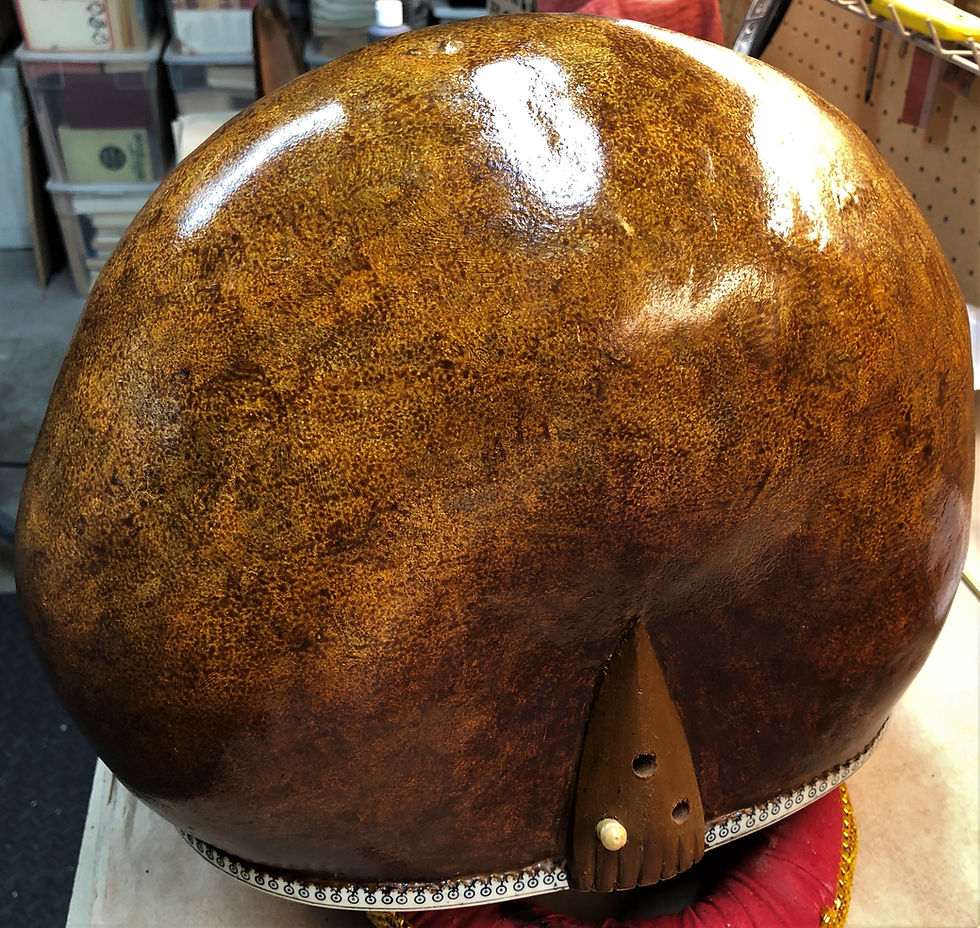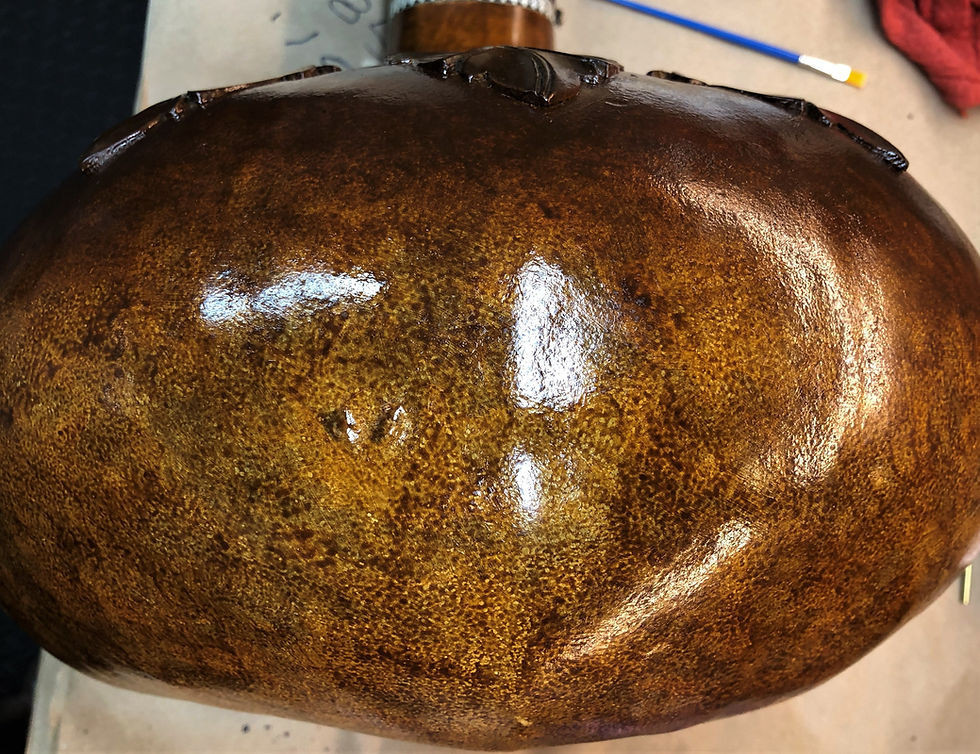Mid-20th Century Lion Head Sitar
- The Registry
- Oct 2, 2020
- 1 min read

This instrument arrived in perfect structural condition and was good cosmetically. The smallish tabli is unusually thick. The tumba is slightly larger than the tabli, yielding desirable "shoulders" that protrude at the upper and lower bouts. The jawari, meru, murri, peg tips, and langot posts are ivory. Aside from a light French polish, it needed only a tumba refinish and replacement of a couple of missing frets.



We decided to replicate our favorite mid-century tumba finish.


This sitar has thin frets measuring 3.85mm. We had none of the right size, so we fabricated replacements from 4mm brass rod stock using only a carpenter's hammer, a vice, and a rotary tool with a cutting wheel attachment.

We decided to tone down the shine on the tumba refinish, but it would be easy to revert to the high-gloss version.
The restored instrument is below. They don't make them like they used to.
This instrument is part of the Registry's Permanent Collection and is not for sale.































































Hello,
I am a restorator from Germany. I play the sitar by myself. I currently have several sitars for restoration. Often the surface of the tumba is destroyed so that it has to be completely replaced. I marveled at the fantastic surfaces of the Tumbas on your homepage. I would be interested in which processes they use and which paints are involved and where I can get them. I would be happy if I got an answer. Kind regards
Michael
swamimail@web.de